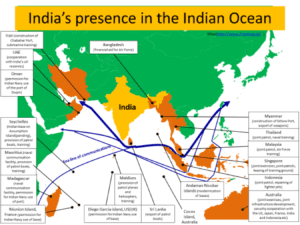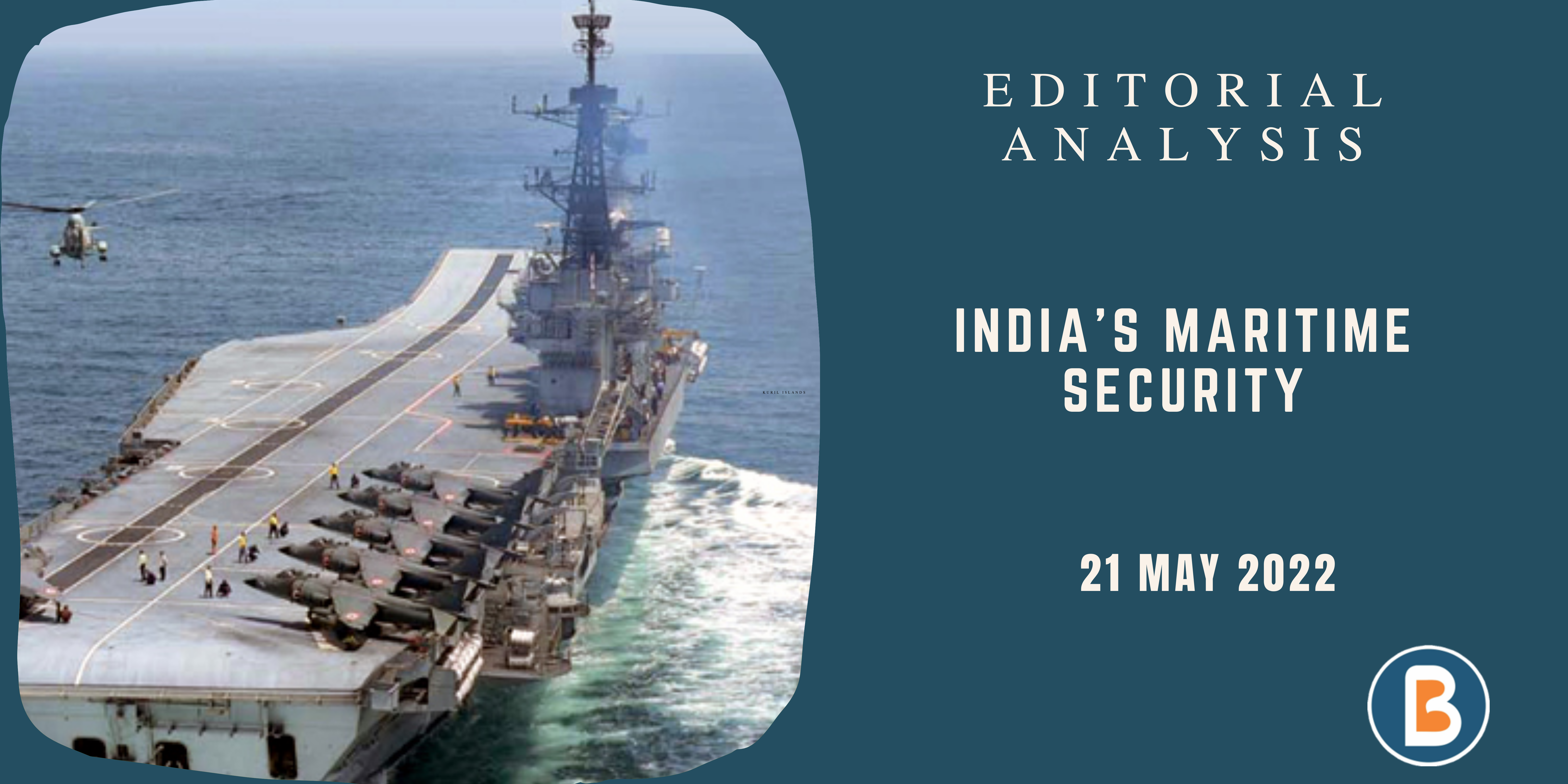India’s Maritime Security Concerns
Context:
- The appointment of India’s first National Maritime Security Coordinator (NMSC) reflects seriousness to address maritime security challenges.


What is the present situation?
- Following the 2008 Mumbai attacks, the maritime security infrastructure was overhauled, with a “focus on monitoring, intelligence collecting, and information exchange among the many players.”
- The Indian Navy (IN) was given total responsibility for maritime security, including coastal and offshore security, by the Cabinet Committee on Security (CCS) in February 2009.
- The ICG was given the job of overall coordination between the state and the central agencies, as well as coastal security in territorial seas, including regions to be monitored by the Coastal Police.
- The Ministry of Home Affairs (MHA) has undertaken a comprehensive Coastal Security Scheme to boost coastal state police security infrastructure and capabilities.
- Coastal security is also reviewed periodically with all stakeholders by the National Committee for Strengthening Maritime and Coastal Security (NCSMCS), constituted under the Chairmanship of Cabinet Secretary.
- Currently, coastal security of India is governed by a three-tiered structure.
- The Indian Navy patrols the International Maritime Boundary Line (IMBL), while the ICG is mandated to do patrolling and surveillance up to 200 nautical miles (i.e., EEZ).
- Simultaneously, the State Coastal/Marine Police (SC/MP) performs boat patrolling in shallow coastal areas.
- The Border Security Force (BSF) is deployed in the creek areas of Gujarat and Sundarbans in West Bengal.

Lack of Coordination:
- The Government of India (GoI) created the office of Chief of Defence Staff (CDS) at the rank of four-star general in a historic decision in 2019.
- The CDS was also given the responsibility of heading the newly constituted Department of Military Affairs (DMA) and serving as its Secretary.
- The ICG, on the other hand, was placed under the MoD, despite the fact that the Army, Navy, and Air Force were all placed under the DMA.
- Despite the fact that the GoM Report said that in both peace and conflict, coordination between the IN and the ICG is required.
Way Forward:
- The creation of a distinct force by dividing the maritime border guarding mission and the related infrastructure, assets, and manpower of the ICG and placing it under the administrative supervision of the MHA could be considered as a mitigating solution.
- When the ICG was formed, a similar approach was used when two frigates and five patrol boats were moved from the IN to help establish up the new force.
- The third alternative is to create a separate marine border guarding unit under MHA from scratch. The new force may be given all of the assets and manpower that have been sanctioned to the ICG as a result of the extra responsibility for coastal security.

Source: THE HINDU.
For more update, click here to join our telegram channel




